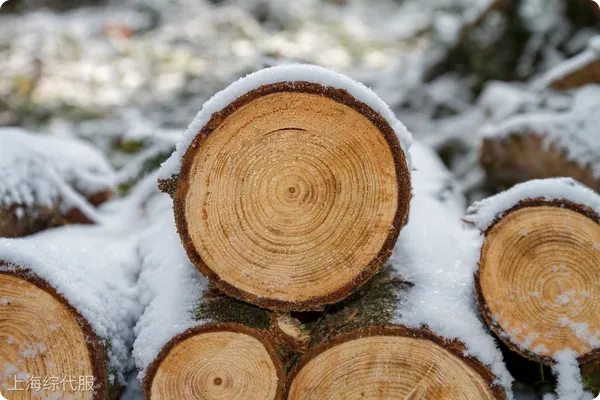With the development of import and export trade, wooden packaging has been widely used in the field of international trade. However, wooden packaging for goods is prone to inadequate pest control, which may cause the spread of harmful organisms and thus hinder the customs clearance of goods. So, what does wooden packaging include and what issues should be paid attention to during import and export? The following will answer your questions.

I. About wooden packaging
Wooden packaging refers to wooden materials used to carry, pack, cushion, support and reinforce goods, including wooden boxes, wooden crates, wooden pallets, wooden frames, wooden barrels, wooden shafts, wooden wedges, pads, sleepers, lining wood and other forms. Specifically.
According to relevant regulations, wood materials for packaging that have been artificially synthesized or deeply processed by heating, pressurization, etc. (such as plywood, fiberboard, etc.), thin peeled cores, sawdust, wood fibers, wood shavings, etc., and wood materials with a thickness of 6mm or less do not fall into the category of wood packaging. After special treatment, the properties and uses of these materials are different from traditional wood packaging, so the quarantine and management requirements in import and export trade are also different.
II. Precautions for import and export of wooden packaging
Fumigation
- Treatment requirements: Most countries require that wooden packaging used for imported goods be fumigated to kill possible harmful organisms, such as insects, germs, etc. Common fumigation agents include methyl bromide, aluminum phosphide, etc.
- Label and certification: After fumigation, the corresponding fumigation label, such as the IPPC label, must be applied to the wooden packaging. This label is a certificate recognized by the International Plant Protection Convention. At the same time, fumigation certification documents must be provided, detailing the time, location, and agents of the fumigation.
Material and quality
1. Prohibited materials: Some countries prohibit the use of certain specific wood materials as packaging, such as untreated logs, wood with bark, etc. These materials have a higher risk of carrying pests.
2. Packaging quality: Wooden packaging should have sufficient strength and stability to protect the goods from damage during transportation. The packaging structure should be reasonable to avoid looseness and deformation.
Declaration and Documents
1. Truthful declaration: When declaring imports and exports, you must truthfully declare whether the goods are packed in wood, as well as the relevant information about the wood packaging, including whether it has been fumigated and whether it has the IPPC mark.
2. Document preparation: In addition to the fumigation certificate, other relevant documents such as packing list, invoice, etc. need to be prepared to ensure that the documents are complete and accurate for inspection by customs and inspection and quarantine departments.
Special requirements and exemptions
1. Special country requirements: Different countries may have different requirements for wood packaging. For example, EU countries have stricter standards for wood packaging, while some developing countries may have relatively loose standards.
2. Exemptions: In some cases, there may be exemptions for wood packaging. If the goods themselves have special properties or packaging methods, and the inspection and quarantine department assesses that the risk is low, an exemption may be granted.
Transportation and storage
1. Transportation safety: During transportation, pay attention to protecting wooden packaging to avoid damage such as collision and squeezing. For goods that need to be protected from moisture and rain, appropriate protective measures should also be taken to prevent wooden packaging from getting damp and rotting.
2. Storage conditions: After the goods arrive at the destination port, if customs clearance and delivery cannot be carried out in time, the wooden packaging should be stored in a dry and ventilated warehouse to avoid prolonged exposure to a humid environment.

III. Fumigation treatment of wooden packaging
The fumigation treatment of wooden packaging is mainly divided into three types: whole box fumigation, LCL fumigation and fumigation of packaging.
Fumigation classification
- Fumigation of whole container: When the "IPPC" mark is not required, the goods can be directly packed after arriving at the site, and the fumigation team will be notified for fumigation. Different scales of fumigation agents are sprayed according to the destination country. If the customer has no special requirements, the fumigation team generally sprays CH3BR agents for 24-hour fumigation. If the "IPPC" mark is required, the goods will be dropped off at the site after being delivered to the corresponding site, and the customs broker will be notified of the location where the goods will land. The fumigation team will apply the words "IPPC" on the front and back of each package, and then arrange the site for packing and fumigation.
- LCL fumigation: LCL goods can be put into the same container for fumigation, but four conditions must be met at the same time: the same port of destination, the same country, the same voyage and the same Commodity Inspection Bureau.
- Fumigation of packaging: Submit the inspection documents to the customs for commodity inspection, and then fumigate the packaging specifically.
Fumigation requirements
- Fumigation time: The fumigation time must reach 24 hours to ensure the fumigation effect.
- Packaging requirements: wooden packaging cannot have bark or insect holes. If wooden packaging has bark, the customs broker will generally help customers to remove the bark; if insect holes are found, the shipper needs to be notified to change the packaging to prevent pests from entering the trade circulation link through the problematic packaging.

Conclusion
In short, when conducting relevant foreign trade business, enterprises must adhere to the principle of honesty and trustworthiness and should not take chances. When choosing a freight forwarding company, you should have a deep understanding of its market reputation and credibility. In addition, you need to pay attention to the quarantine requirements of my country and the destination country for wooden packaging through multiple channels to ensure that the goods are smoothly cleared during the import and export process and reduce unnecessary losses.


 Follow customer service WeChat
Follow customer service WeChat